In today’s fast-paced world, maintaining cardiovascular fitness doesn’t always require high-intensity workouts that strain joints and muscles. Low-impact exercises offer a gentler approach to building stamina, making outdoor activities more accessible for people of all ages and fitness levels. Whether you’re recovering from an injury, managing a chronic condition, or simply seeking to enjoy nature without the pounding impact of traditional exercises, these 13 low-impact options can help you build endurance while minimizing stress on your body. Beyond just improving physical fitness, these activities allow you to connect with nature, breathe fresh air, and develop the stamina needed for longer outdoor adventures.
Walking with Proper Technique
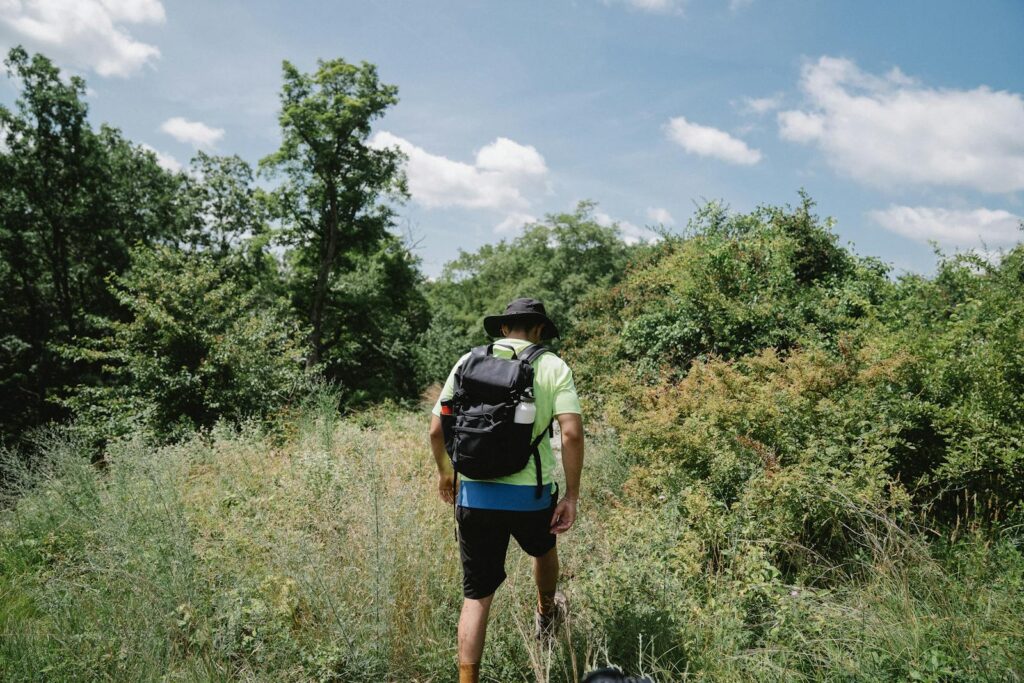
Walking remains one of the most accessible and effective low-impact exercises for building outdoor stamina. Unlike running, walking keeps one foot on the ground at all times, reducing joint impact while still elevating your heart rate. To maximize benefits, focus on proper posture—shoulders back, head up, and core engaged—while taking deliberate heel-to-toe steps. Walking at varying paces and gradually increasing distance builds cardiovascular endurance without stressing joints. For added challenge, incorporate intervals by alternating between casual strolling and power walking, or seek out gentle hills that naturally increase intensity without adding impact.
Hiking on Gentle Trails

Gentle hiking offers cardiovascular benefits while building lower body strength essential for outdoor stamina. Beginning with well-maintained, relatively flat trails allows you to develop foundational endurance before progressing to more challenging terrain. The varied surfaces of natural paths engage stabilizing muscles more effectively than treadmills or paved roads, improving balance and proprioception. Carrying a light backpack adds resistance that builds strength without dramatically increasing impact forces. For beginners, aim for shorter hikes of 1-3 miles on dirt paths with minimal elevation change, gradually increasing distance as your stamina improves.
Recreational Cycling
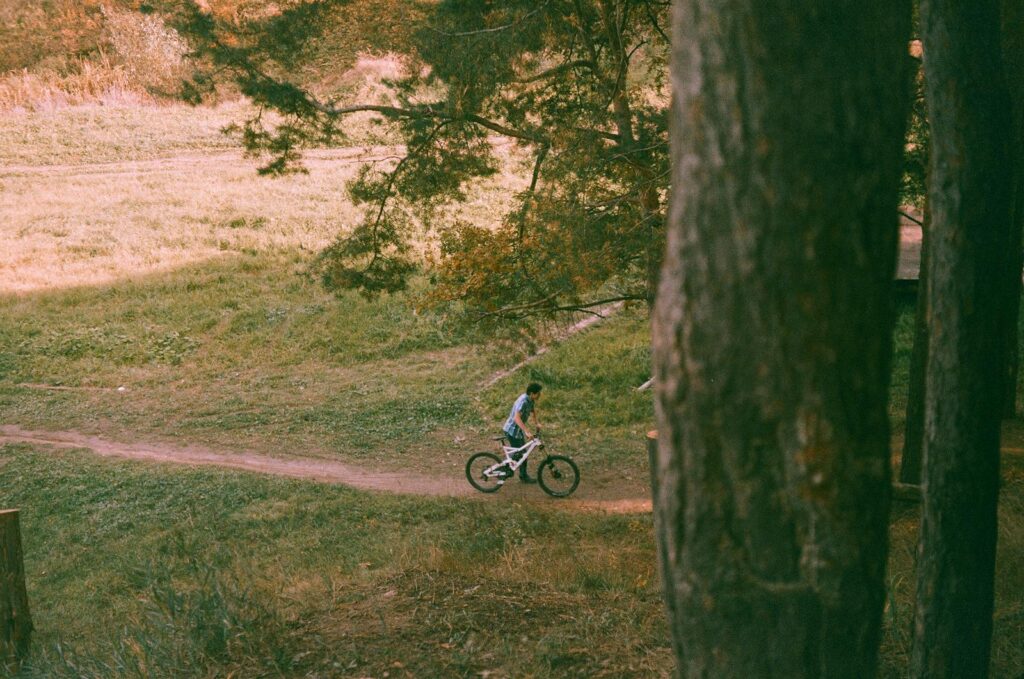
Cycling provides exceptional cardiovascular benefits while eliminating almost all impact on knees, ankles, and hips. The circular pedaling motion improves joint mobility and builds muscular endurance in the quadriceps, hamstrings, and calves—all crucial muscle groups for outdoor activities. Beginning with flat terrain allows you to focus on proper form and consistent cadence before attempting hills or longer distances. For those new to cycling, stationary bikes offer a controlled environment to build basic stamina before transitioning to outdoor routes. Aim for sessions of 20-30 minutes initially, gradually increasing duration as your cardiovascular fitness improves.
Tai Chi in Natural Settings
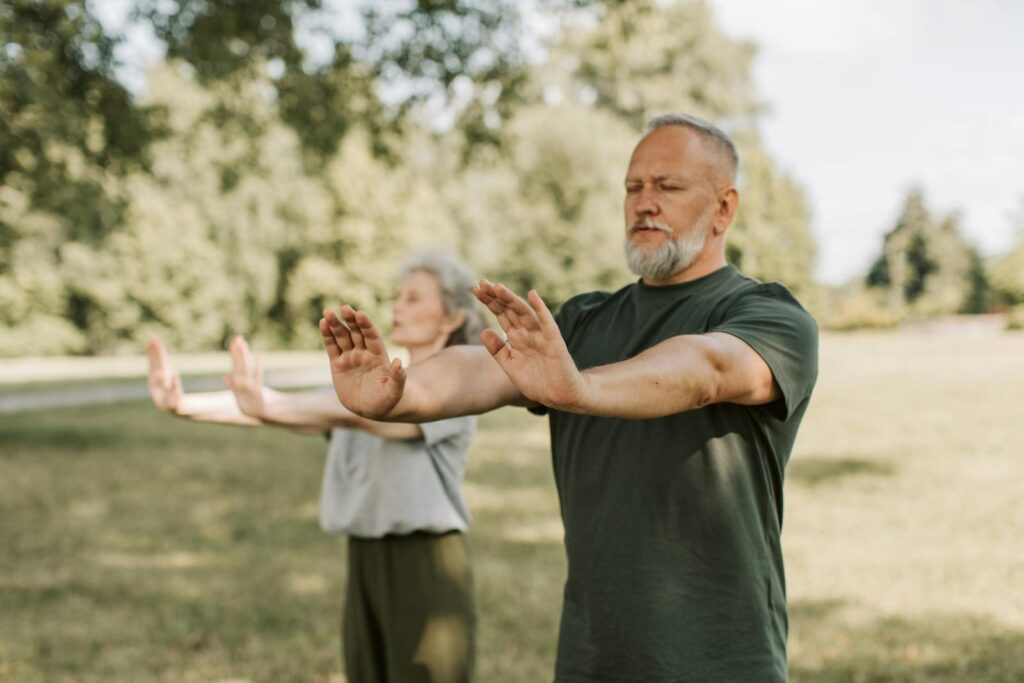
Practicing Tai Chi outdoors combines mindful movement with natural surroundings, creating a uniquely restorative approach to building stamina. The slow, deliberate movements improve balance, flexibility, and muscular endurance without jarring impacts. Despite its gentle appearance, Tai Chi effectively raises heart rate through sustained postures and flowing transitions, particularly in more advanced forms. Regular practice builds core strength and enhances breath control—both essential components of overall stamina. Finding a level outdoor space like a park or garden to practice creates an ideal environment for connecting movement with nature while gradually building physical resilience.
Nordic Walking

Nordic walking elevates traditional walking by incorporating specialized poles that engage the upper body, transforming a lower-body exercise into a full-body workout. The poles reduce impact on knees and joints while the pushing motion activates chest, shoulder, and arm muscles rarely engaged during regular walking. Studies show Nordic walking burns approximately 20% more calories than standard walking at the same pace, making it more efficient for cardiovascular conditioning. The technique requires a natural walking pattern with poles striking the ground in opposition to your feet—right pole with left foot and vice versa—creating a rhythmic four-point movement pattern that improves coordination while building whole-body stamina.
Outdoor Swimming

Swimming in natural settings like lakes, rivers, or oceans provides a zero-impact cardiovascular workout that builds exceptional stamina. The water’s resistance creates natural opposition to movement in all directions, engaging multiple muscle groups simultaneously without any jarring impact on joints. The thermal properties of water also increase cardiovascular demand as your body works to maintain temperature, enhancing the stamina-building effects. For beginners, starting with shorter sessions in calm water using breaststroke or sidestroke conserves energy while building foundational endurance. As your comfort and stamina increase, gradually extending swimming duration and incorporating different strokes provides progressive challenges that continue building cardiovascular capacity.
Kayaking or Canoeing

Paddling sports offer remarkable upper body and core conditioning while placing minimal stress on weight-bearing joints. The rhythmic nature of paddling motions gradually builds cardiovascular endurance while developing rotational strength in the torso—a key component of functional fitness often neglected in other exercises. Beginning with calm, protected waters allows novice paddlers to develop proper technique and build baseline stamina before attempting longer distances or more challenging conditions. The connection with water environments—whether lakes, slow-moving rivers, or protected coastal areas—adds a meditative quality that reduces perceived exertion while still delivering significant physiological benefits. For optimal stamina development, start with 30-minute sessions and gradually extend duration as upper body endurance improves.
Outdoor Yoga Sessions
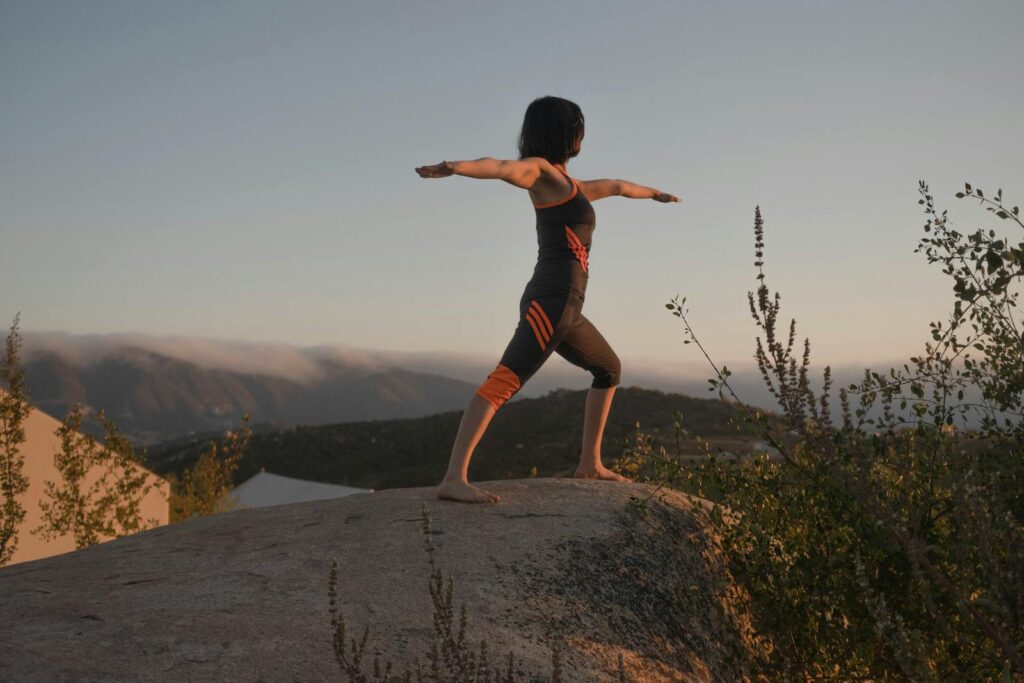
Practicing yoga outdoors combines strength, flexibility, and endurance training in a low-impact format that connects movement with natural surroundings. The sustained holding of poses builds isometric strength and muscular endurance, particularly when flowing between positions in styles like Vinyasa. The breath control developed through regular yoga practice directly enhances respiratory efficiency, increasing oxygen delivery during all physical activities. For building outdoor stamina, focus on sequences that gradually increase in duration and intensity, such as sun salutations performed in multiple repetitions. Finding natural settings with level ground—beaches, grassy parks, or forest clearings—creates ideal environments for developing mind-body connection while building the physical resilience needed for extended outdoor activities.
Elliptical Training in Outdoor Fitness Parks

Many community parks now feature weather-resistant elliptical machines that provide the benefits of this low-impact exercise in fresh air settings. The elliptical motion eliminates impact while still creating resistance that builds lower body strength and cardiovascular endurance. Unlike indoor machines, outdoor ellipticals often use your body weight as the primary resistance, creating a more functional workout that translates well to natural movement patterns. The absence of motorized components means your muscles must initiate and maintain momentum throughout the exercise, enhancing the stamina-building effects. Starting with 10-15 minute sessions and gradually increasing to 30-45 minutes builds endurance that transfers effectively to hiking, walking, and other outdoor pursuits.
Stand-Up Paddleboarding (SUP)
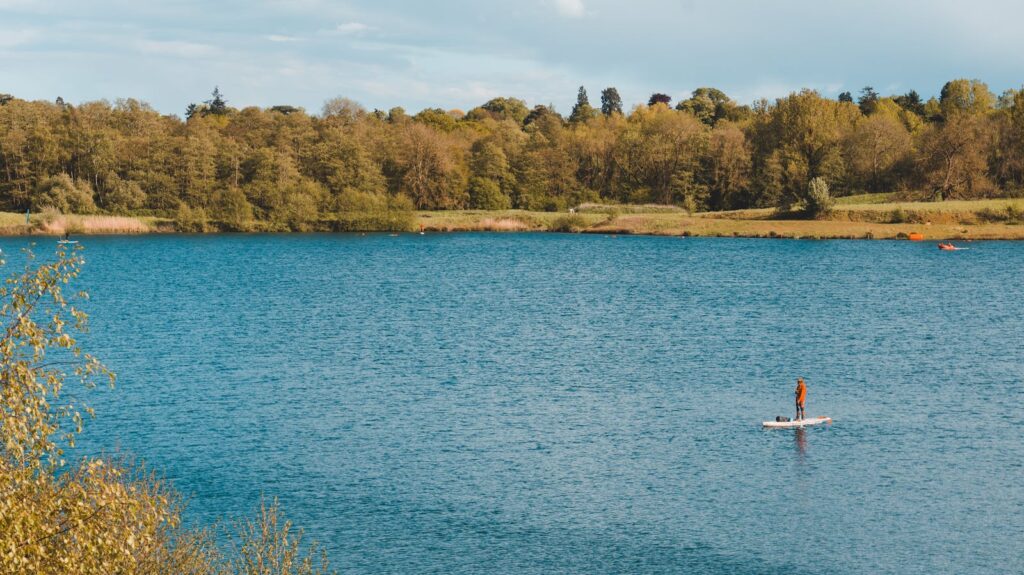
Stand-up paddleboarding offers a full-body, low-impact workout that dramatically improves balance and core strength while building cardiovascular endurance. The constant stabilization required to remain upright on the board engages small postural muscles rarely activated in other exercises, improving proprioception and overall body awareness. Paddling against even mild water resistance provides significant upper body conditioning without the jarring impact of traditional strength training. For beginners, starting on calm, protected water allows for gradual skill development while still delivering cardiovascular benefits. As technique improves, increasing distance or paddling against stronger currents progressively challenges the cardiovascular system, building the stamina necessary for extended outdoor activities.
Cross-Country Skiing
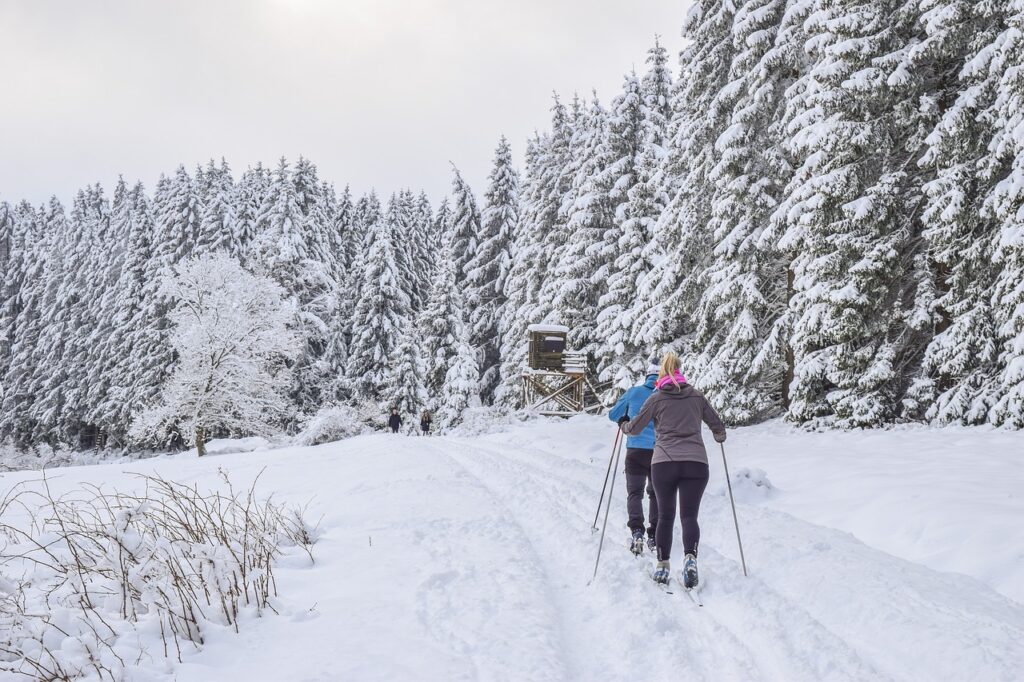
Often regarded as one of the most complete endurance exercises, cross-country skiing provides exceptional cardiovascular benefits while minimizing joint impact. The gliding motion eliminates the repetitive pounding of running while still engaging virtually every major muscle group. During snow-free seasons, specialized roller skis allow practitioners to maintain this low-impact training on paved surfaces, making it a year-round option for stamina development. The alternating pushing and pulling motions build balanced strength throughout the upper and lower body while the continuous nature of the movement creates sustained cardiovascular demand. For beginners, starting with shorter distances on relatively flat terrain allows proper technique development before progressing to more challenging routes with varied elevation.
Outdoor Resistance Training with Bands

Resistance band training in outdoor settings combines strength development with cardiovascular conditioning in a format that places minimal stress on joints. Unlike traditional weights, bands provide variable resistance that peaks at the end range of motion, reducing joint compression while still effectively building muscular endurance. Performing compound movements like squats, rows, and presses with minimal rest between exercises elevates heart rate, creating a cardio-strength hybrid workout that builds functional stamina. Bands can be anchored to trees, playground equipment, or sturdy benches to create a full-body workout in virtually any outdoor setting. Creating circuits of 8-10 exercises performed for time rather than repetitions builds both muscular and cardiovascular endurance simultaneously.
Outdoor Stair Walking

Utilizing natural or architectural staircases found in parks, monuments, or stadiums provides an effective low-impact alternative to running for building lower body strength and cardiovascular endurance. The vertical component increases workout intensity without increasing impact forces, as proper stair climbing technique involves controlled foot placement rather than jumping or bounding movements. The stepping motion builds exceptional quadriceps, hamstring, and gluteal strength—all critical muscle groups for hiking and other outdoor pursuits. Beginning with shorter sets of stairs and taking rest intervals allows proper form development before attempting longer continuous climbs. For reduced impact, focus on a measured pace with full foot placement on each step rather than running or taking multiple steps at once.
The journey to improved outdoor stamina doesn’t require punishing high-impact workouts that leave joints aching. These thirteen low-impact exercises demonstrate that building endurance can be gentle yet effective, allowing people of all ages and fitness levels to enjoy longer, more fulfilling outdoor experiences. By incorporating several of these activities into your regular routine, you’ll develop the cardiovascular fitness, muscular endurance, and respiratory efficiency needed for extended time in nature. Remember that consistency matters more than intensity—regular participation in these low-impact activities will gradually build the stamina necessary to fully embrace outdoor adventures while keeping your body healthy and resilient for years to come.

